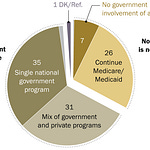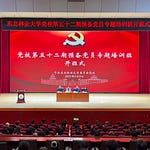1. Where TikTok Stands Now
The White House has released details of the agreement shaping TikTok’s future in the United States:
A new board of seven directors, six of them American.
Data stored by Oracle.
The recommendation algorithm was rebuilt from scratch in the U.S.
U.S. investors expected to hold 80 percent of the new company, Chinese shareholders only 20 percent.
On paper, TikTok stays in the U.S. In practice, it is being cut apart and rebuilt. Data and algorithms, the real core, are no longer under ByteDance control.
2. Politics: Fighting Without Breaking
This deal is not just business. It is about the U.S.-China rivalry.
U.S. logic: Control data and algorithms so China cannot shape public opinion or elections.
China’s logic: Compromise where possible, but keep some hold on the algorithm, the core source of influence.
The algorithm question: TikTok is preparing a U.S.-only version of the app, trained only on U.S. user data. That is why the algorithm has to be retrained inside the U.S. The idea is to isolate the American platform so no overseas engineers or data shape what U.S. users see.
This opens a big question. If the algorithm is rebuilt under Trump’s administration, will it tilt toward his politics? With 170 million American users, a new algorithm could change the entire content environment. TikTok might stop being an open entertainment app and turn into a controlled political tool.
This is what “fighting without breaking” looks like. Both sides keep ties, but the U.S. wants full control while China tries to hold on to a token presence.
3. Business Map: U.S. Stagnation, Southeast Asia Growth
The business story is different.
In the U.S., TikTok’s e-commerce results are weak:
2024 GMV (Gross Merchandise Value, total sales on the platform) was about 8.5 billion dollars, far below the 15.5 billion target.
The 2025 target was cut from 25 billion to 18 billion.
The reasons are clear:
High tariffs make goods expensive.
Americans shop on Amazon and prefer search-based shopping to live-stream sales.
Few local influencers can drive strong sales.
TikTok lacks warehouses and delivery networks in the U.S., so logistics costs are high.
Ongoing threats of bans make merchants hesitant to commit resources.
In Southeast Asia the picture is the opposite:
2024 GMV hit 34 billion dollars, three-quarters of TikTok’s global total.
2025 targets have been raised to 65 billion dollars or more.
In Indonesia, Vietnam, and Thailand, live-stream shopping has taken off. Sellers, buyers, and influencers form a complete ecosystem.
The contrast is sharp. In the U.S., TikTok struggles with politics and culture. In Southeast Asia, it is becoming a serious rival to Shopee and Alibaba.
Conclusion
TikTok in the U.S. is no longer a business story. It is a political pawn. Its algorithm, once global, is being retrained into a U.S.-only version. That change could reshape what 170 million Americans see on their feeds.
In Southeast Asia, the story is different. TikTok’s business is growing fast, and its ecosystem is strong. That is where ByteDance is betting on the future.
TikTok’s split path shows something larger. Globalization is breaking into separate systems. TikTok is not only one company’s struggle. It is a sign of how politics and business are drawing a new map for the world.











